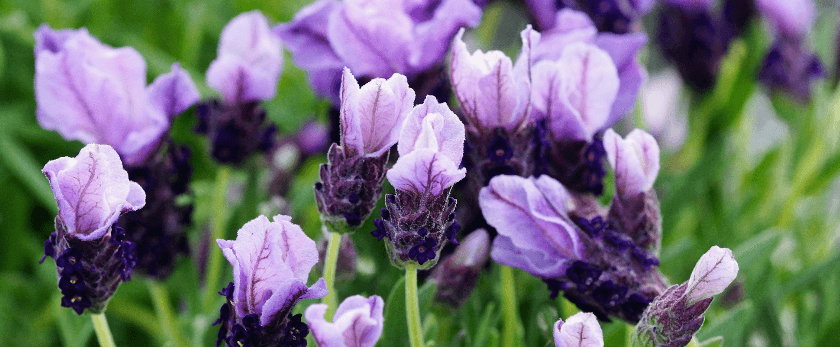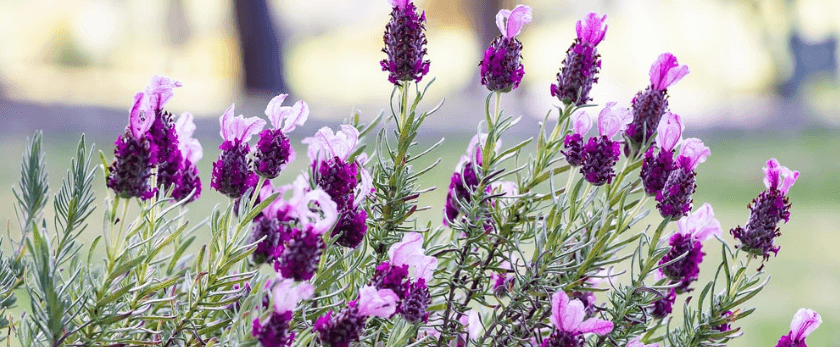Spanish lavender, also known as Lavandula stoechas, is a beautiful and fragrant plant that is native to the Mediterranean region. It is a popular choice for gardens and landscapes due to its vibrant purple flowers and its ability to attract pollinators like bees and butterflies. Not only is Spanish lavender aesthetically pleasing, but it also has many practical uses, such as in cooking, aromatherapy, and as a natural insect repellent.
If you're interested in growing Spanish lavender in your own garden, here are some tips and tricks to help you get started.
How to Care for Spanish Lavender
Watering
One of the most important aspects of caring for Spanish lavender is proper watering. This plant is drought-tolerant and does not require a lot of water, making it a great choice for those looking to conserve water in their gardens. However, it is important to water your Spanish lavender regularly, especially during the first year of growth.
When watering, make sure to water deeply and thoroughly, allowing the water to reach the roots. This will encourage the roots to grow deeper, making the plant more resilient to drought conditions. It is best to water in the morning or evening to avoid evaporation during the hottest part of the day.
Light
Spanish lavender thrives in full sun, so make sure to plant it in an area that receives at least 6-8 hours of sunlight per day. If you live in a hot climate, some afternoon shade may be beneficial to prevent the plant from getting too stressed.
Soil
Spanish lavender prefers well-draining soil with a pH level between 6.5 and 7.5. If your soil is too acidic, you can add lime to raise the pH level. If it is too alkaline, you can add sulfur to lower the pH level. It is also recommended to mix in some organic matter, such as compost, to improve the soil's texture and nutrient content.
Fertilizer
Spanish lavender does not require a lot of fertilizer, but a light application of a balanced fertilizer in the spring can help promote healthy growth. Avoid using high-nitrogen fertilizers, as they can cause the plant to produce more foliage and fewer flowers.
Pruning
Pruning is an essential part of caring for Spanish lavender. It not only helps maintain the plant's shape and size but also promotes new growth and prevents the plant from becoming woody. It is best to prune Spanish lavender in the spring, just as new growth begins to appear. Use clean and sharp pruning shears to remove any dead or damaged branches, as well as any spent flowers.
What is the Best Time to Grow Spanish Lavender?
The best time to grow Spanish lavender is in the spring, after the last frost has passed. This will give the plant enough time to establish its roots before the hot summer months. If you live in a warmer climate, you can also plant Spanish lavender in the fall, as long as you provide it with enough water to get through the winter.

Common Problems with Spanish Lavender
While Spanish lavender is a relatively low-maintenance plant, it can still face some common problems. Here are a few issues you may encounter and how to address them:
- Root rot: This can occur if the soil is too wet or if the plant is overwatered. To prevent root rot, make sure to plant Spanish lavender in well-draining soil and avoid overwatering.
- Powdery mildew: This fungal disease can affect Spanish lavender, especially in humid conditions. To prevent powdery mildew, make sure to provide good air circulation around the plant and avoid getting the foliage wet when watering.
- Pests: Spanish lavender is generally resistant to pests, but it can still attract aphids, spider mites, and whiteflies. You can use natural methods like spraying the plant with a mixture of water and dish soap to get rid of these pests.
Conclusion
Growing Spanish lavender is a rewarding experience that not only adds beauty to your garden but also has many practical uses. By following these care tips, you can ensure that your Spanish lavender thrives and continues to bring joy and benefits to your outdoor space. Remember to also practice responsible disposal methods for any plant waste, such as composting, to contribute to a more sustainable future. Happy gardening!










